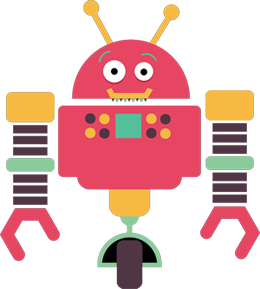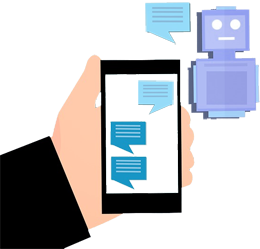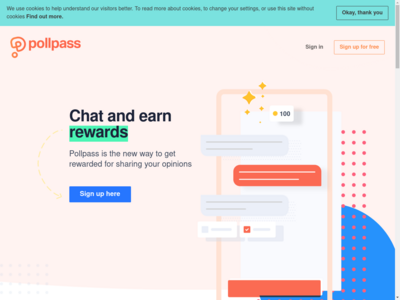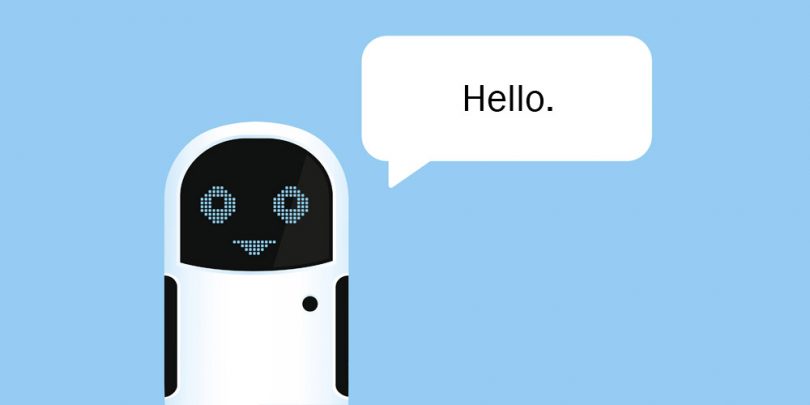Chatbots are well-known for their widespread use in casual online interactions. What many people don’t realize, however, is that they’re also widespread in the world of consumer engagement and surveys. When it comes to analyzing sentiment through surveys, bots are right at the forefront of opinion-gathering technology.
Chatbot basics
 Chatbots have been around since the earliest days of the internet. Originally designed in the mid-1990s1 as academic computer programs designed to simulate human conversation, they eventually grew in complexity and purpose. Although modern bots are still limited in their vocabularies, conversational ranges and ability to respond to the unexpected, they’re highly effective at handling routine, topical interactions.
Chatbots have been around since the earliest days of the internet. Originally designed in the mid-1990s1 as academic computer programs designed to simulate human conversation, they eventually grew in complexity and purpose. Although modern bots are still limited in their vocabularies, conversational ranges and ability to respond to the unexpected, they’re highly effective at handling routine, topical interactions.
This is where online surveys come into play; by their nature, a survey is the same questionnaire that is supplied to multiple (typically, thousands of) survey takers. Many contain complex logic that supplies different questions, depending on the survey taker’s answers. Whether a survey is complicated or simplistic, computers are excellent at logic puzzles and chatbots are highly adept at administering surveys in an innovative fashion that also typically results in a better user experience than traditional surveying tools.
Making chatbots work

Since chatbots are powered by artificial intelligence, they’re highly adaptable. These tools can be taught2 to remember consumer preferences, and create mapped conversations that direct users to appropriate resources and outcomes.
There are many different methods for building effective chatbots and training them to deal with unique situations. For instance, some employ conversation mapping techniques3 that use flowchart-like rules to determine where the dialogue is going and accommodate multiple possible responses. This is exactly how complex online surveys are also designed.
Many chatbots look for predetermined keywords and phrases to recognize when they need to deliver specific information, such as a series of specific questions. Bots can also leverage artificial intelligence techniques like machine learning4 to study their past interactions and improve their performance, although most still have trouble with complicated ideas and complex sentence structures. They can also count on receiving appropriate follow-up assistance since bots can analyze semantic meanings and sentiments.
The survey-taker’s perspective

Business tools where customers are contacted, should be positive and enhance the user experience, so how do chatbots stack up? One of the nice things about using artificial intelligence to conduct surveys is that it produces organic conversations. In other words, talking to a bot doesn’t feel like talking to a bot, especially for quick interactions.
This can make a huge difference in your potential willingness to respond to surveys. Since you’ll feel more like you’re engaging with a person rather than answering a set of questions, you may feel more of a rapport with a chatbot, which can make you feel like your opinions matter more to companies. As a nice bonus, bots also remember preferences, so it’s much easier to pick up where you previously left off in a survey, without having to rehash old ground.
Another neat aspect of chatbot technology is that its close historical integration with the web makes it perfectly at home with most modern digital services. You can take these surveys with your desktop browser or smartphone, making them accessible and convenient to take, and with businesses then getting answers sooner, it’s a win-win on both sides!
Key survey chatbot takeaways
 Thanks to their ability to understand context and conversational flows, chatbots are on the frontier of new technology, facilitating survey takers to answer questions the way we’re all accustomed to – to another human, via conversation. Although not human, chatbots are increasing in sophistication, and feel less and less mechanical.
Thanks to their ability to understand context and conversational flows, chatbots are on the frontier of new technology, facilitating survey takers to answer questions the way we’re all accustomed to – to another human, via conversation. Although not human, chatbots are increasing in sophistication, and feel less and less mechanical.
Since they don’t have to speak formally, learn new technological skills or risk losing their train of thought while they wait for live operators, when you interact with a chatbot, you are more likely to share information that reflects how you truly feel. In other words, survey chatbots are bridging gaps between brands and their clients by overcoming key barriers to communication that often negatively even affect human-to-human interactions.
Taking surveys with survey chatbots
If you’d like to experience taking a survey with a chatbot, you have a few options:
 OneOpinion – although OneOpinion doesn’t use chatbots in their actual surveys, they use a very smart one to handle customer service inquiries from survey takers. In fact, ‘Emily’ is so smart, she even knows how to credit points to user accounts! Emily the bot is continuously being refined and for more complicated inquiries, she knows when to turn things over to a human.
OneOpinion – although OneOpinion doesn’t use chatbots in their actual surveys, they use a very smart one to handle customer service inquiries from survey takers. In fact, ‘Emily’ is so smart, she even knows how to credit points to user accounts! Emily the bot is continuously being refined and for more complicated inquiries, she knows when to turn things over to a human.
 Pollpass – this unique community is one where traditional surveys are replaced by having short conversations with the Pollpass bot. Talk about things you’ve bought, liked, disliked, and are passionate about using the Pollpass app, whenever and wherever is convenient for you.
Pollpass – this unique community is one where traditional surveys are replaced by having short conversations with the Pollpass bot. Talk about things you’ve bought, liked, disliked, and are passionate about using the Pollpass app, whenever and wherever is convenient for you.
Sources:
1. What is a Chatbot and How to Use It for Your Business
2. Top 10 Best Chatbot Platform Tools to Build Chatbots for Your Business
3. 10 Simple Tips on Bot Strategy and Design
4. What Is The Difference Between Artificial Intelligence And Machine Learning?







